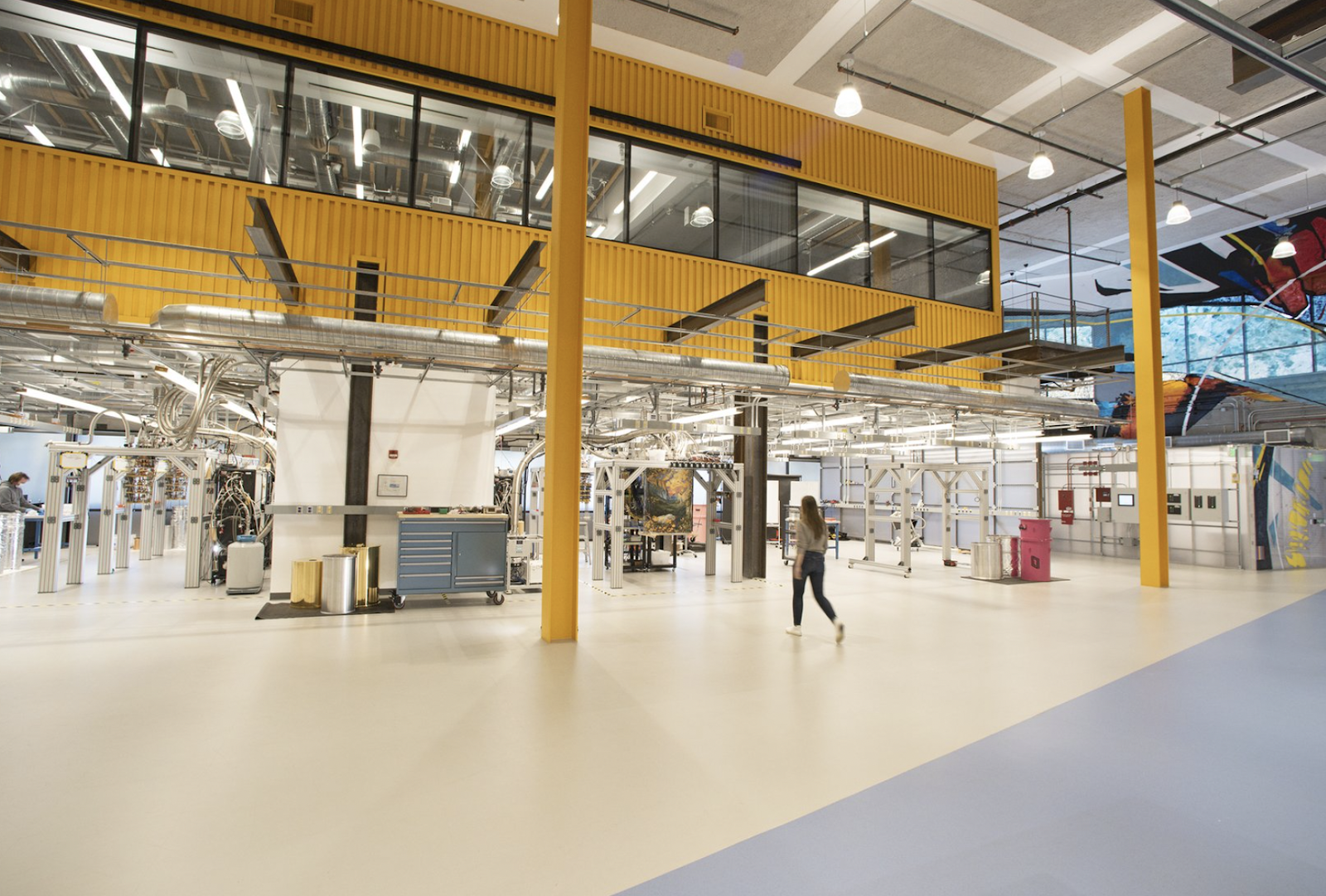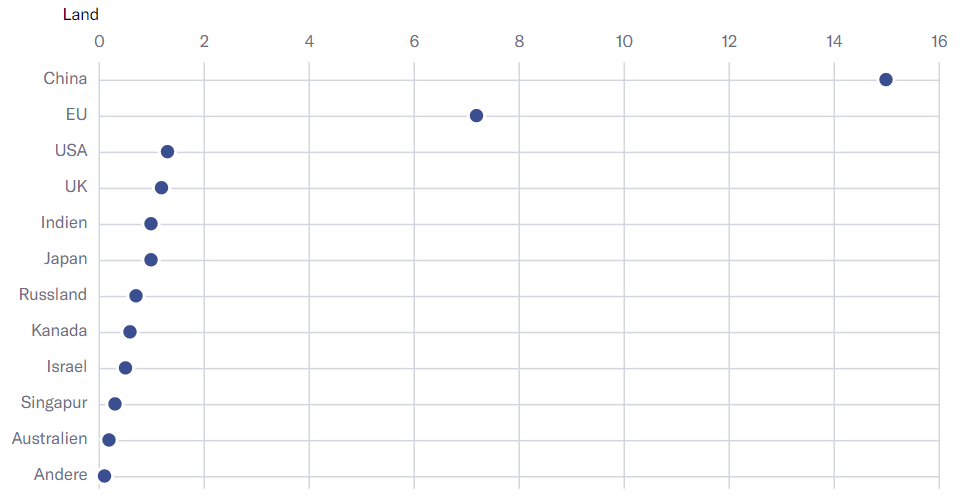Google's new lab is supposed to look hip, you can see that at first glance - as hip as the surfer town of Santa Barbara where it is located. The interior walls are brightly painted, and in the entrance area there are no racks for bicycles but for surfboards. Those who prefer sports on land are greeted by a huge climbing wall. "We want our employees to feel as comfortable as possible here," laughs Erik Lucero, who heads Google's Quantum AI Lab. He himself looks less like a researcher and more like a Hollywood star: chin-length hair, leather jacket, and sunglasses on his lapel.
The casual sports are meant to create mental space because the scientists here are working on one of the most complex problems of our time: quantum computing. Some experts even describe it as the most important front on which mankind is currently researching.
Quantum computers work according to the mechanisms of quantum physics. The exact mode of operation is complex, but the most important difference to conventional computers is the following: A classical bit, i.e. the smallest information unit of a computer, can, as is well known, only assume two states - 0 or 1 - and only one after the other. The elementary computational units of a quantum computer, on the other hand, the so-called quantum bits or qubits, can fall into several states - and do so simultaneously.
This should make difficult calculations possible at breakneck speed: Which combination of chemical agents will produce the best drugs? How do you most efficiently distribute a huge fleet of electric cars to charging stations? How do you optimize complicated stock portfolios so that the risk of loss is minimal?
A quantum computer looks like an upside-down wedding cake
Google is one of the leading players in quantum computing research, but far from the only one. IBM, Microsoft, Amazon, Intel, and China's Alibaba - the biggest technology corporations of our time have been investing billions of dollars for years, and hundreds of startups now also specialize in quantum computing.
Google opened its quantum computing lab in Santa Barbara in the spring of 2021, but because of the pandemic, visitors have only been allowed on the premises for a few months. The fact that the center is located here, of all places, is due to the local university: The University of California, Santa Barbara, or UCSB for short, is one of the world's pioneering research centers for quantum computing and has been cooperating with Google for years. The company even poached the leading research group in the field a few years ago.

In the center of the large factory hall, surrounded by clean rooms and workbenches, is the heart of the lab. Google's quantum computer hangs from the ceiling like an upside-down wedding cake. Instead of cream and sponge cake batter, the computer is made of snakes of cables that lead to the top. Here sits the palm-sized processor, nicknamed Sycamore, and on top of it, in turn, a fingernail-sized chip with the tiny little qubits on it; in this case, there are 54 of them. There are a total of twenty such quantum computers here in the lab, all with slightly different designs.
Some of the cables leading to the processor belong to cooling lines. When experiments are running, Lucero and his colleagues sink the entire quantum computer into a huge metal cylinder; this is the only way to achieve the freezing temperatures needed for quantum calculations. The cold ensures that thermal noise remains as low as possible so that the scientists can record the signals from the qubits at all. To do this, the ambient temperature must drop to 10 millikelvins, or about minus 273 degrees Celsius - similar to the frigid temperatures found in space. "That's one reason why no one will ever have a quantum computer at home," Lucero says with a laugh.
Extreme temperatures are achieved with helium mixtures that a compressor pumps into the quantum computer through pipes on the ceilings. The dull pumping noise can be heard throughout the lab.
Has Google made a breakthrough - or not?
In 2019, Google's scientists in Santa Barbara caused a worldwide sensation: The researchers claimed to have demonstrated "quantum superiority" - a milestone. Specifically, Google's Sycamore computer solved a task in 200 seconds that would take even the most powerful conventional computers 10,000 years. Nature magazine celebrated Lucero and his colleagues' breakthrough on its cover; an enlarged and framed copy of it hangs prominently in the entryway just across from the climbing wall.
But then in 2022, Chinese scientists claimed they had also been able to solve the aforementioned task of Google's quantum computer with 60 normal graphics processors, taking only 5 days to do so. The proven "quantum superiority" seemed to be gone. Asked about this, Lucero says, "We carry a target on us because we showed the world what we did." He says he is pleased with the criticism from Chinese colleagues, saying that is a sign of good science.
The fact is that even after decades of research and billions of dollars of investment, many questions remain unanswered: how exactly a quantum computer should be constructed, what materials the qubits should be made of, and in what formation they should ideally be arranged. More - many more - qubits are needed that can compute simultaneously and also for much longer without errors. Different companies are pursuing different strategies to solve these problems. But to date, quantum computers have high error rates and usually fail. There is hardly a problem suitable for everyday use that quantum computers could already solve. If anything, they are good at generating random numbers, Lucero says.

Erik Lucero leads Google's Quantum AI Lab in Santa Barbara.
It will be years before the quantum advantage is achieved. Alexei Kitayev, one of the world's leading scientists in the field at Caltech University, recently told The New Yorker, "In 1998, I predicted that we could have built quantum computers in 30 years. I'm not sure we'll get there by then." Security specialists refer to the time as "Y2Q," or roughly "years to quantum computing."
Answers to the most pressing problems of mankind
Even if the road still seems long, the big prize money beckons at the end. Whoever is the first to achieve the quantum advantage will probably have created the successor to the silicon chip, the invention that ushered in the information age.
Then fundamentally new applications will open up. Scientists believe that a quantum computer could efficiently simulate any process that exists in nature. For example, the development of a drug, which today costs an average of $2 billion and takes more than ten years, could be massively accelerated. Similarly, quantum computers could produce new industrial chemicals that would help in the fight against climate change and food shortages. It could also be used to develop biodegradable plastics or CO2-free fuel for airplanes. Quantum computers, it seems, would provide answers to humanity's most pressing problems. McKinsey estimates that the financial value added across all industries will be at least $300 billion to $700 billion.
Other applications of quantum computers, however, are less encouraging. These computers are capable of cracking common encryption methods. Emails, financial transactions, or health data are all known to be encrypted by security protocols. A conventional computer would need thousands of years to crack them - a quantum computer would have tried all possible combinations in less than a day. American intelligence agencies have warned for years about these downsides of quantum computing. "Such a decryption capability could render the losing nation's military capabilities almost irrelevant," wrote a National Security Agency (NSA) official in a guest editorial in The New York Times a few years ago.
All digital communication could be decrypted
That's one reason numerous countries are racing to develop new technology. The Biden administration, for example, declared quantum computing a priority for national security in the spring. Billions are being invested in ensuring that the U.S. plays in the top league - while at the same time, the country is upgrading its own defenses. By 2035 at the latest, all government agencies must have their data encrypted according to a new, quantum-safe standard that intelligence services like the NSA are currently working on. The whole thing is expected to cost billions of dollars. But the threats to economic and military security are significant, the government argues. Already today, hostile intelligence agencies around the world are collecting and hoarding encrypted communications in the hope of one day being able to read them.
To date, McKinsey estimates that $30 billion in public money has been spent worldwide on research into quantum computing. The Chinese government is leading the way, it said, with $15 billion to be spent on quantum computing research and development - more than all other countries combined. "Looking at the production of high-quality qubits, you could say the Chinese are leading the way," scientist John Martinis, whose team demonstrated quantum superiority at Google in 2019, said in a recent interview.
China invests more than any other country in quantum computing

This article was originally posted by: NZZ

















